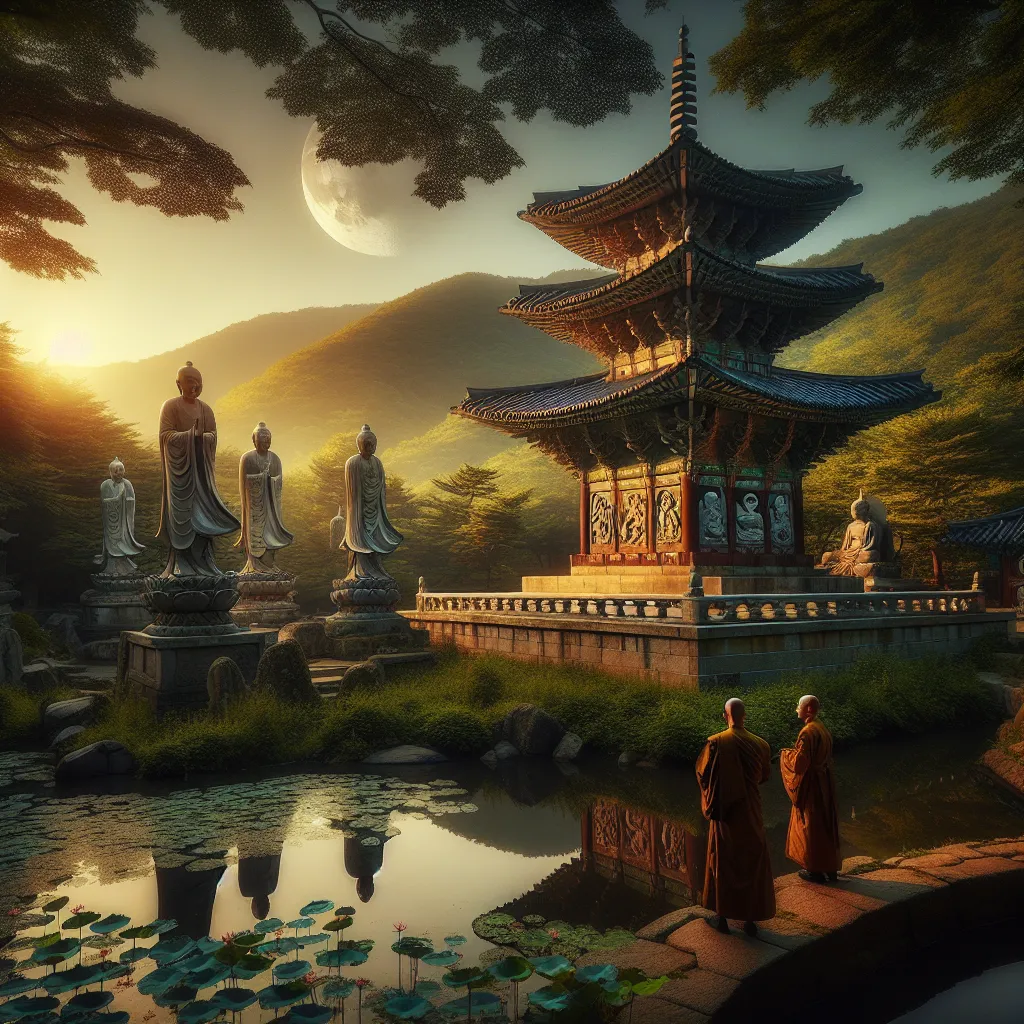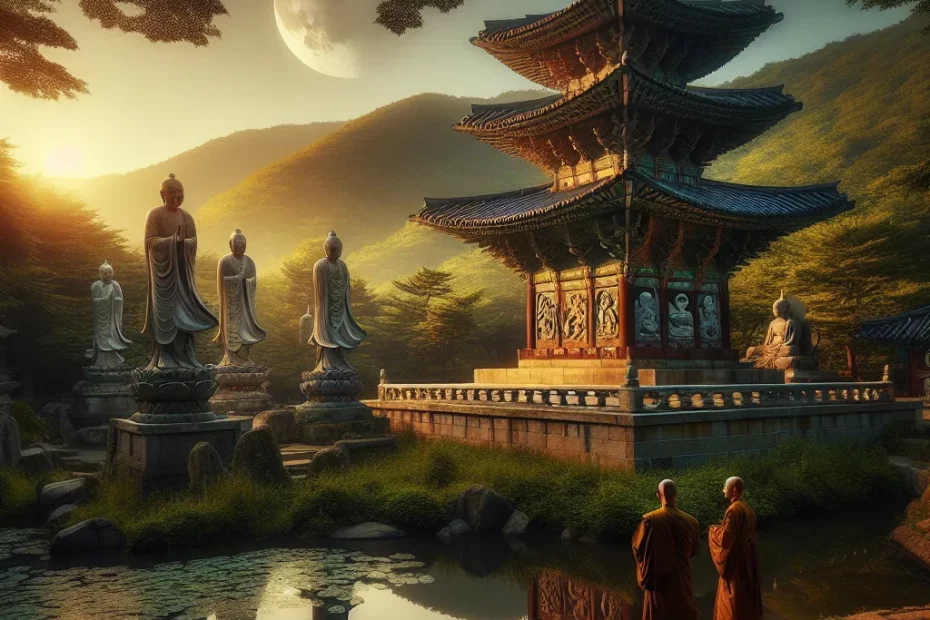The Silla Dynasty, known as Korea’s Golden Age of Art and Culture, left a profound legacy that continues to shape modern Korea. Understanding the origins of this influential dynasty provides valuable insights into its remarkable achievements. The flourishing artistic endeavors of the Silla Dynasty, from exquisite gold crowns to intricate pottery, showcase the pinnacle of Korean artistry. Religious influences, particularly Buddhism, played a significant role in shaping the cultural landscape of the Silla Dynasty, leaving a lasting imprint on Korean society. Today, the legacy of the Silla Dynasty can be seen in various aspects of modern Korean culture, highlighting the enduring impact of this remarkable period in history.

Understanding the Silla Dynasty’s Origins
Welcome to a journey back in time to unravel the origins of the illustrious Silla Dynasty, a pivotal era in Korean history that laid the foundation for the country’s golden age of art and culture. The Silla Dynasty, also known as the Kingdom of Silla, emerged in the early 1st century AD in the southeastern region of the Korean Peninsula. 🌟
The Saro Confederacy
The Silla Dynasty’s origins can be traced back to the confederation of six chiefdoms known as the Saro Confederacy. These chiefdoms, namely Gyeru, Geeum, Saro, Daegaya, Iseul, and Seobyeo, united to form a powerful alliance to resist external threats and maintain stability in the region. Through strategic alliances and military prowess, Silla gradually expanded its influence over neighboring territories, eventually establishing itself as a dominant force in the region. 🏰
Unique Political Structure
One of the defining characteristics of the Silla Dynasty was its unique political structure, which was based on a system of hereditary monarchy. The dynasty was ruled by a succession of monarchs from the same royal family, known as the Kim clan. This hereditary system provided stability and continuity to the Silla government, allowing it to thrive for over a millennium. 👑
Advancements in Art, Culture, and Technology
In addition to its political achievements, the Silla Dynasty was also renowned for its advancements in art, culture, and technology. The kingdom’s capital city, Gyeongju, was a hub of artistic and intellectual activity, attracting scholars, artists, and craftsmen from across East Asia. The Silla Dynasty’s artistic legacy is exemplified by the exquisite gold crowns, intricate pottery, and Buddhist sculptures that have been unearthed from archaeological sites in Gyeongju. 🎨
Transmission of Buddhism
Furthermore, the Silla Dynasty played a crucial role in the transmission of Buddhism to Korea. Under the patronage of the royal court, Buddhism flourished, leading to the construction of magnificent temples and pagodas throughout the kingdom. The integration of Buddhism into Silla society not only enriched the cultural landscape but also fostered a sense of spiritual unity among the people. ☸️
As we delve deeper into the origins of the Silla Dynasty, it becomes evident that this period of Korean history was characterized by innovation, prosperity, and artistic achievement. The legacy of the Silla Dynasty continues to inspire awe and admiration, serving as a testament to the enduring power of art and culture in shaping the identity of a nation. Let us continue to explore the rich tapestry of history that the Silla Dynasty has woven, and celebrate the remarkable achievements of this golden age of Korean civilization. 🌺
The Flourishing Artistic Achievements of the Silla Dynasty
The Silla Dynasty, one of the Three Kingdoms of Korea, left a profound legacy in the history of art and culture. During its rule from 57 BC to 935 AD, the Silla Dynasty witnessed a golden age of artistic flourishing, marked by remarkable achievements in various fields such as sculpture, pottery, metalwork, and painting. 🌟
The Iconic Geumgwan Adornments
One of the most iconic artistic achievements of the Silla Dynasty is the creation of intricate gold crowns, known as “Geumgwan Adornments.” These exquisite crowns, adorned with delicate patterns and intricate designs, showcase the exceptional craftsmanship and artistic sophistication of the Silla artisans. The Geumgwan Adornments not only served as symbols of royalty but also reflected the cultural and artistic prowess of the Silla Dynasty. 👑
Excellence in Celadon Pottery
In addition to gold crowns, the Silla Dynasty also excelled in pottery making. Silla potters were renowned for their mastery in crafting celadon ceramics, characterized by their elegant shapes and subtle green glazes. The Gyeongju region, the capital of the Silla Dynasty, was particularly famous for its celadon production, with Silla celadon wares being highly prized for their beauty and quality. 🏺
Contributions to Buddhist Art and Sculpture
Moreover, the Silla Dynasty made significant contributions to Buddhist art and sculpture. The Seokguram Grotto, a UNESCO World Heritage site, houses a magnificent granite Buddha statue that exemplifies the exquisite craftsmanship of Silla sculptors. The intricate details and serene expression of the Seokguram Buddha reflect the spiritual devotion and artistic finesse of the Silla artisans, making it a masterpiece of Korean Buddhist art. 🕊️
Development of Unique Painting Styles
Furthermore, the Silla Dynasty’s artistic achievements extended to the realm of painting, with the development of unique painting styles and techniques. Silla murals, found in various temples and tombs, depict vibrant scenes of daily life, mythology, and Buddhist motifs. These colorful and expressive murals not only served as decorative elements but also conveyed profound religious and cultural messages, showcasing the rich artistic heritage of the Silla Dynasty. 🎨
In conclusion, the Silla Dynasty’s artistic achievements represent a pinnacle of Korean art and culture, reflecting the creativity, skill, and cultural sophistication of the ancient kingdom. From exquisite gold crowns to delicate celadon ceramics and magnificent Buddhist sculptures, the artistic legacy of the Silla Dynasty continues to inspire awe and admiration, underscoring its enduring impact on Korean art and culture. 🌺
Religious Influence in Silla Dynasty’s Cultural Development
During the Silla Dynasty in Korea, which lasted from 57 BC to 935 AD, religion played a pivotal role in shaping the cultural development of the kingdom. Buddhism, in particular, had a profound impact on various aspects of Silla society, including art, architecture, and social structure. Let’s delve into the religious influence in the Silla Dynasty’s cultural development and explore how it contributed to Korea’s Golden Age of Art and Culture! 🏛️🎨🙏
Artistic Flourishing Through Buddhist Patronage
Buddhism’s introduction to the Silla Kingdom brought with it a surge in artistic expression. Monks and artisans collaborated to create exquisite Buddhist sculptures, paintings, and architecture. The construction of temples, such as the famous Bulguksa Temple and Seokguram Grotto, showcased the intricate artwork and devotion to Buddhist ideals. These artistic endeavors not only served religious purposes but also elevated the status of Silla as a center of artistic excellence in East Asia. 🖼️🏯
Cultural Exchange and Influence
The adoption of Buddhism in Silla facilitated cultural exchange with neighboring regions, such as China and Japan. This exchange of ideas, art forms, and technologies enriched Silla’s cultural landscape and promoted cross-cultural understanding. The spread of Buddhist teachings through art and literature fostered a sense of unity among the people and established Silla as a beacon of cultural enlightenment in the region. 🌏📚🤝
Social Structure and Moral Values
Buddhism’s emphasis on compassion, morality, and self-discipline influenced the social structure of Silla society. The teachings of Buddhism promoted ethical behavior, respect for others, and a sense of community. Monasteries served as centers of learning and charity, providing education and support to the less fortunate. The integration of Buddhist values into everyday life fostered a harmonious and compassionate society in Silla. 🌟🤲🧘♂️
Legacy and Enduring Impact
The legacy of Buddhism in the Silla Dynasty continues to resonate in Korean culture to this day. The artistic achievements, moral values, and cultural exchanges that flourished during this period laid the foundation for Korea’s rich artistic heritage and spiritual traditions. The influence of Buddhism in Silla’s cultural development remains a testament to the enduring power of religion in shaping society and fostering creativity. 🌸🕊️🌟
In conclusion, the religious influence of Buddhism in the Silla Dynasty played a crucial role in shaping the kingdom’s cultural development and establishing its legacy as a golden age of art and culture. The fusion of artistic expression, cultural exchange, and moral values propelled Silla to greatness and left an indelible mark on Korean history. Let us continue to celebrate and honor the profound impact of religion on shaping the cultural landscape of ancient civilizations. 🎉🌌🙌
Legacy of the Silla Dynasty in Modern Korea
Artistic Flourishing:
During the Silla Dynasty, art and culture reached unprecedented heights. The exquisite craftsmanship of Silla artisans is evident in the intricate gold crowns, delicate pottery, and stunning Buddhist sculptures that have survived through the centuries. These artistic achievements not only reflect the aesthetic sensibilities of the time but also serve as a source of inspiration for contemporary Korean artists and craftsmen.
Architectural Marvels:
The architectural prowess of the Silla Dynasty is showcased in the magnificent Bulguksa Temple and Seokguram Grotto, both designated as UNESCO World Heritage Sites. These structures stand as a testament to the advanced engineering and artistic skills of the Silla people. Today, they attract visitors from around the world, highlighting the enduring appeal of Silla architecture.
Cultural Traditions:
The Silla Dynasty laid the foundation for many cultural traditions that are still cherished in modern Korea. From traditional music and dance forms like pansori and samulnori to the elaborate rituals and ceremonies that mark important occasions, the cultural heritage of the Silla Dynasty continues to thrive. These traditions not only connect the present to the past but also contribute to the unique identity of Korean culture.
Political Legacy:
The Silla Dynasty’s political system, characterized by a centralized monarchy and a sophisticated bureaucracy, set the stage for the governance structures that followed. The emphasis on meritocracy and administrative efficiency during the Silla period has had a lasting impact on the development of Korean governance. The principles of good governance established by the Silla rulers continue to influence modern political practices in Korea.
Educational Advancements:
Education was highly valued during the Silla Dynasty, with the establishment of institutions like Hwarangdo for the training of elite warriors and scholars. The emphasis on scholarship and intellectual pursuits laid the groundwork for the educational system in Korea. Today, South Korea is renowned for its high-quality education system, a legacy that can be traced back to the Silla Dynasty’s commitment to learning and knowledge.
In conclusion, the legacy of the Silla Dynasty is deeply ingrained in the fabric of modern Korea. From its artistic achievements to its political legacy and cultural traditions, the influence of the Silla Dynasty continues to shape Korean society. By understanding and appreciating this rich historical heritage, we gain a deeper insight into the roots of Korean identity and the enduring legacy of one of Korea’s most illustrious dynasties.
The Silla Dynasty’s legacy in Korea is a testament to the country’s Golden Age of art and culture. From its humble origins to its flourishing artistic achievements, the Silla Dynasty’s influence can still be seen in modern Korea. The dynasty’s embrace of Buddhism played a crucial role in shaping its cultural development, leaving behind a rich heritage that continues to inspire and captivate. Today, as we marvel at the intricate artwork and architectural wonders of the Silla Dynasty, we are reminded of a time when Korea shone brightly as a beacon of creativity and innovation. The legacy of the Silla Dynasty lives on, a timeless reminder of Korea’s rich cultural heritage and artistic prowess.
